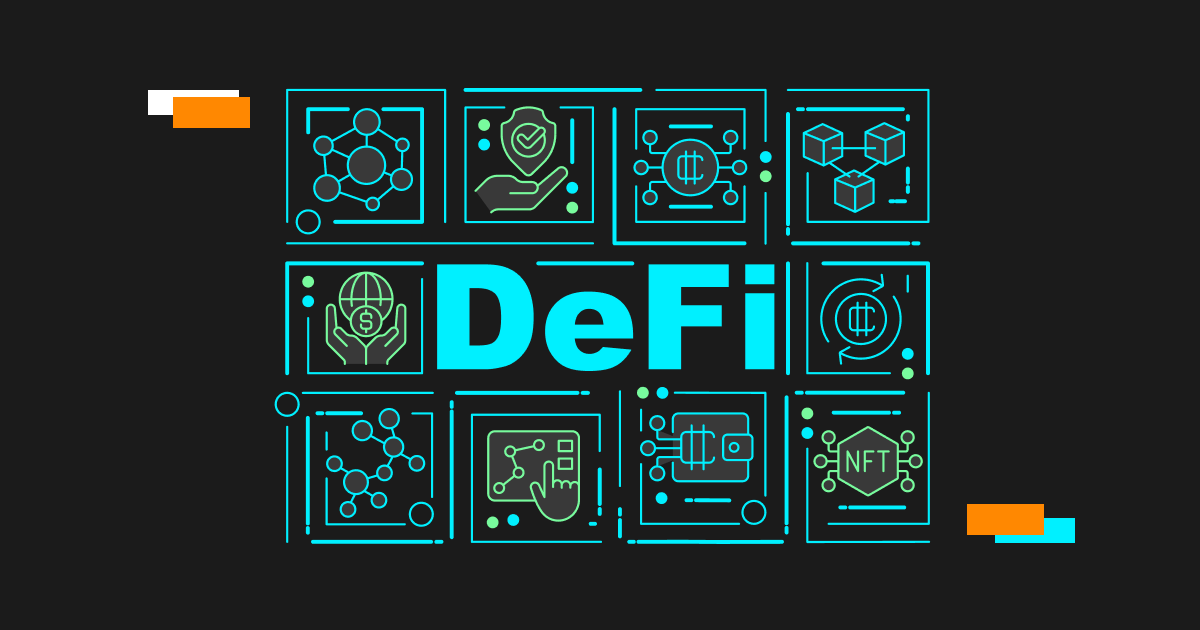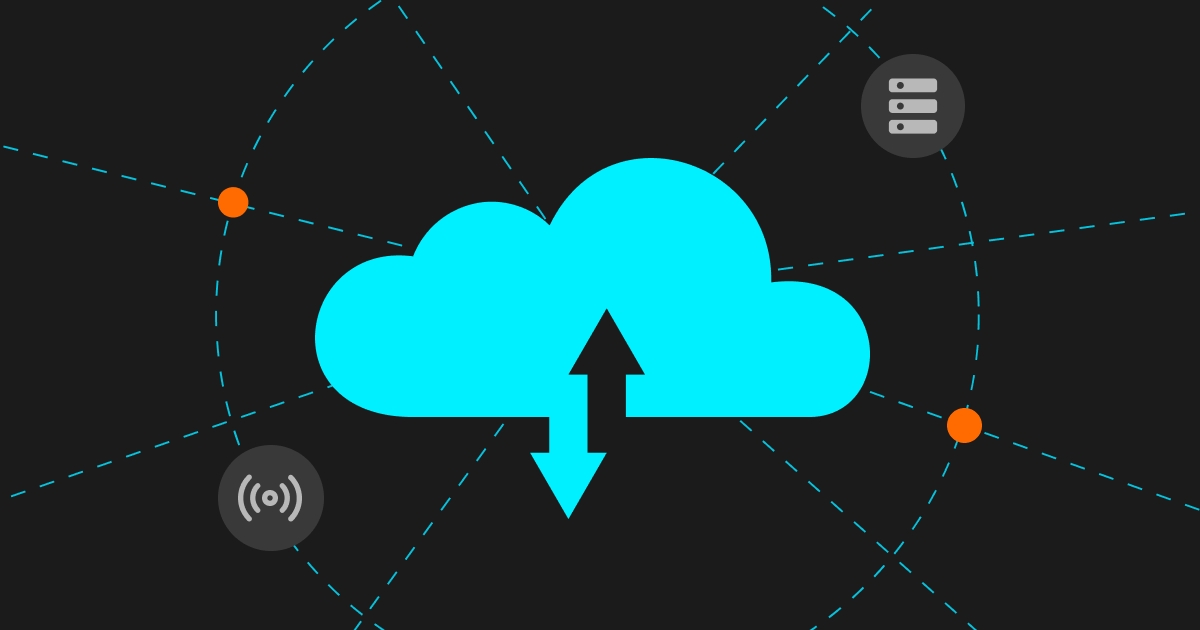Blockchain

The Ultimate Guide of De-Fi (Decentralized Finance)
Beginner
2022-11-07 | 5m
In 2008, the sudden financial crash reflected serious problems in the traditional financial system, what we call Ce-Fi (Centralized Finance), including cheating, without strict regulation, lack of transparency...and more and more. People started to lose confidence in the traditional government and banking systems.
That’s why the
Bitcoin network was created, a peer-to-peer transaction system underlying the Blockchain technology without interruption from any parties.
It’s the beginning of De-Fi (Decentralized Finance). With the Blockchain technology, we are not only carrying out transactions on the Bitcoin network. We can also carry out financial activities, including lending and borrowing, raising funds, issuing bonds and stocks, and even our own
cryptocurrency to raise capital to achieve specific goals!
If you want to start a coffee shop but are struggling with capital, you don’t need to go through a complicated process to access capital from the bank! Instead, you can directly raise funds on
Ethereum and set up a smart contract to attract investors!
Sounds impossible? Let's go through the potential of De-Fi.
What is De-Fi?
De-Fi (Decentralized Finance) refers to a financial system without centralized authorities, like banks or governments to manage accounts and verify transactions on it, which act as an intermediate.
Instead, with the help of Blockchain technology like the Bitcoin Network, the transactions are verified by thousands of nodes around the globe and stored on the Blockchain. It allows users to carry out trustless transfers without worrying about the risk of violation.
Most of the creation and execution of De-Fi applications are based on the smart contract, an automated agreement that will be executed by the computer program when the specific criteria are fulfilled.
Compared to the traditional contract, smart contracts are executed automatically, which reduces the cost of violation and discredibility. It doesn’t require a group of people and resources to carry out the regulation.
With the help of the smart contract, both sides enjoy a more efficient and secure environment under the De-Fi application. More transactions are carried on safely.
|
|
De-Fi
|
Traditional Ce-Fi
|
|
Who is managing the system?
|
It is run by thousands of nodes around the globe. They manage the accounts and verify transactions and finally store them on the Blockchain.
|
It is run by central banks which usually requires the authorization from the government.
|
|
Is it transparent enough?
|
Everyone is able to review the transactions on the Blockchain.
|
It is usually regulated by the government. But it is not open to the public.
|
|
Does it require any intermediates?
|
It is a peer-to-peer financial system without any intermediates to verify transactions. It does require an extra fee or time spent on.
|
The banks always act as an intermediate for different kinds of transactions. If you want to carry out an inter-bank cash transfer, it sometimes may charge you an extra fee and several days to finish the transaction.
|
|
Does it require your personal information?
|
It doesn’t require personal information like name, address or email to open an account. You just get access by creating a wallet that is safe and simple enough.
|
It does require personal information like name, address or email to open an account. It may lead to the extra cost of protecting privacy.
|
What is the De-Fi protocol?
Due to the political risk, war or natural disasters, more than 1.7 billion people on the earth have never owned a bank account, according to the data from the World Bank. They don’t have a place to keep their money safe. They have limited ways to borrow money if there is an urgency or starting a small business. They don’t even carry out normal business transactions like trading as there is no law and regulation in some places.
More than US$12 Billion have been locked up in the De-Fi protocol. The money will be spent on building the autonomous programs that fulfill the needs that can’t be done by traditional finance systems. The DeFi protocols aim to solve the problem of the lack of financial services faced by the poor.
In today, the evolution of DeFi protocols will open the way for introducing more financial instruments. As of now, many DeFi protocols have become integral parts of a complex ecosystem with many notable tokens and projects.
De-Fi’s potential applications in the real world
Here’s some of the popular De-Fi’s applications:
Borrowing: It is the most popular application of De-Fi. There are so many advantages compared to applying for a bank’s mortgage, including instant transaction settlement, the ability to buy digital assets, no credit checks and no need to provide personal information.
Lending: With the help of Blockchain technology, the risk of trust is minimized by the cryptographic verification methods. It makes lending as an investment with a higher rate of return(ROI) compared to saving money in the bank.
Example: You can create a smart contract on Ethereum to borrow or lend crypto. If a borrower doesn’t meet the obligations, the lender can take the funds back.
Trading: People can carry out peer-to-peer exchange of stocks or crypto without intermediates. You can buy and sell your assets to strangers directly.
Example: You can create a crypto wallet without going through the processes set up by the banks or governments.
Fund Raising: If you want to achieve a specific goal, such as starting a crypto project, you can directly raise funds through the Ethereum network by building up a smart contract, including how to allocate the shares and revenue.
Example: ICO (Initial coin offering) of different crypto or tokens projects is a financial behavior in order to get financial support from the public directly. Like Bitget Launchpad is one of the participants helping different potential crypto projects to raise funds.
Global transaction: If we want to carry out a global transaction, the banking systems may charge us a service fee and require several days to complete the transaction. In the De-Fi system, you can carry out peer-to-peer money transactions at any time, at any place to anyone immediately, without any extra cost.
Example: You can carry out peer-to-peer transactions without any intermediate on the Bitcoin Network or Ethereum.
Earning interest rate: Put some of your crypto into savings account alternatives and earn better interest rates compared to the savings account of the bank.
Challenges faced by De-Fi
Actually, the De-Fi application implies several risks. That’s the challenges faced by De-Fi:
Slow rate of transaction: As the proof of work is required to verify the transaction on the Blockchain, it takes a longer time to settle a transaction.
Risk of transaction: As most transactions on the De-Fi applications are carried out without intermediate, the users have to bear the risk of transaction. If they have made some mistakes in a transaction, it is immutable due to the features of the Blockchain. They may suffer from a great money loss and have no way to ask for compensation.
Act as a platform of criminal transactions: As personal data is not required to be provided in order to carry out transactions on De-Fi applications, a wallet is enough. Criminal transactions may usually be carried on.
Not user-friendly: Both the security and efficiency of the De-Fi ecosystem should be improved. More promotion and education should be carried out in order to attract more people to contribute to the De-Fi ecosystem.
Content
- What is De-Fi?
- What is the De-Fi protocol?
- De-Fi’s potential applications in the real world
- Challenges faced by De-Fi
How to sell PIBitget lists PI – Buy or sell PI quickly on Bitget!
Trade nowRecommended
- Bitcoin Genesis Block: Top 8 Questions Answered2025-05-12 | 5m
- Beginner’s Guide to Bitcoin Layer 2 Projects2025-05-08 | 5m
We offer all of your favorite coins!
Buy, hold, and sell popular cryptocurrencies such as BTC, ETH, SOL, DOGE, SHIB, PEPE, the list goes on. Register and trade to receive a 6200 USDT new user gift package!
Trade now


